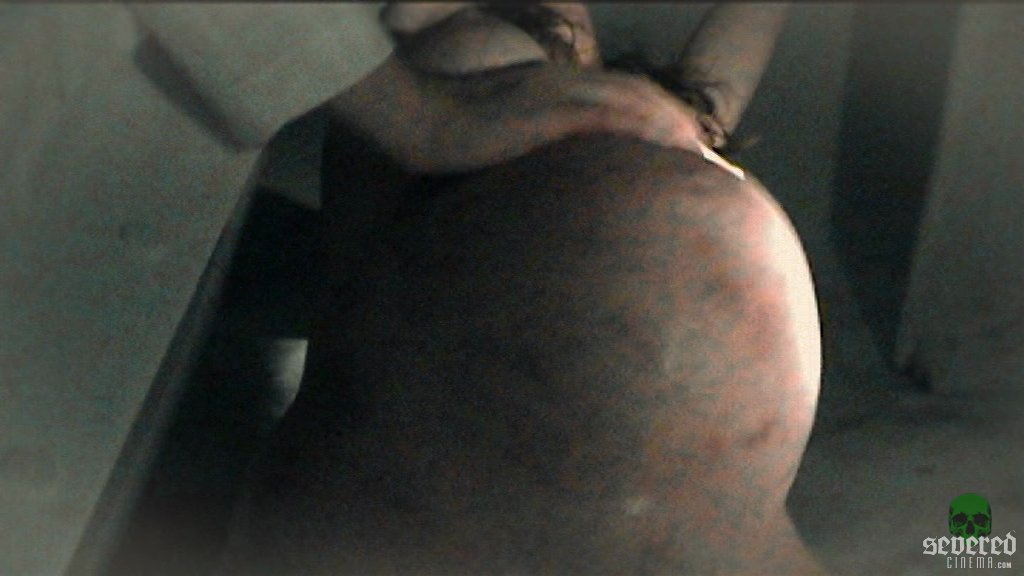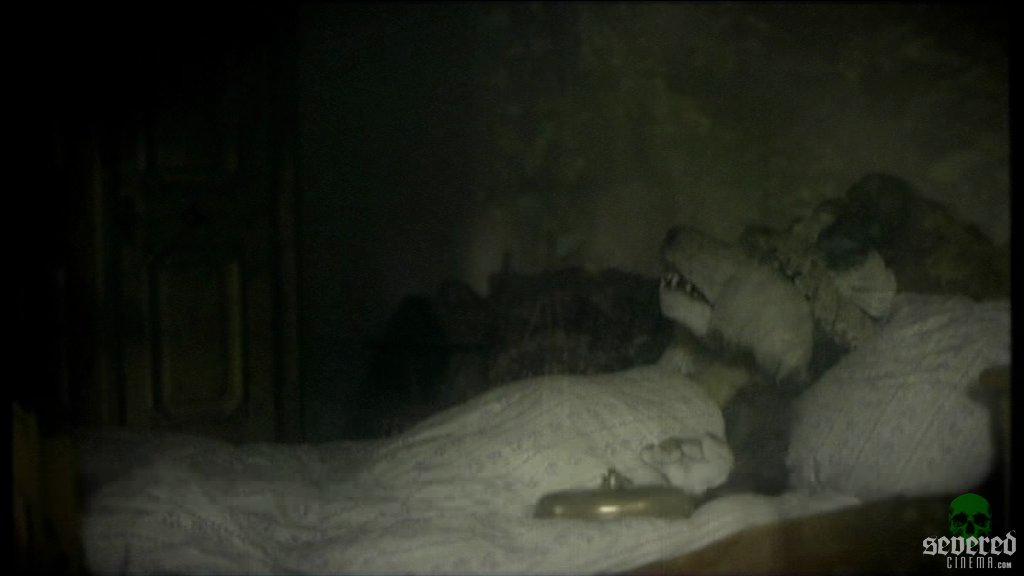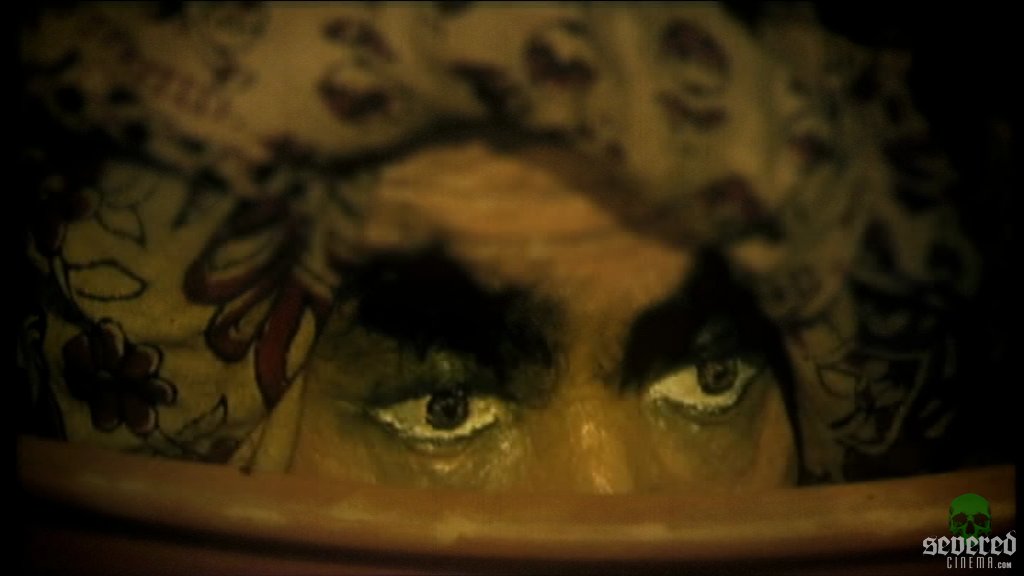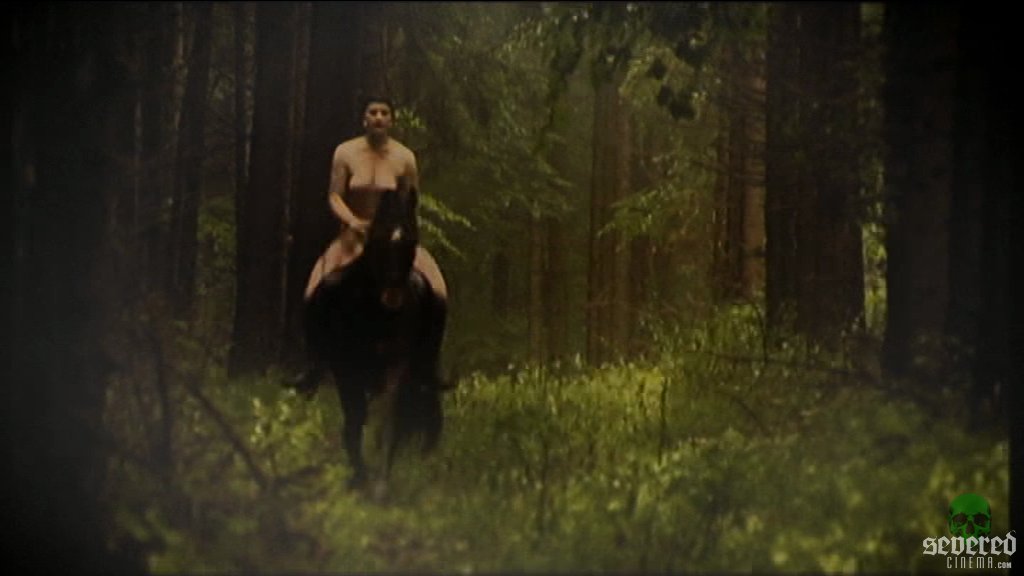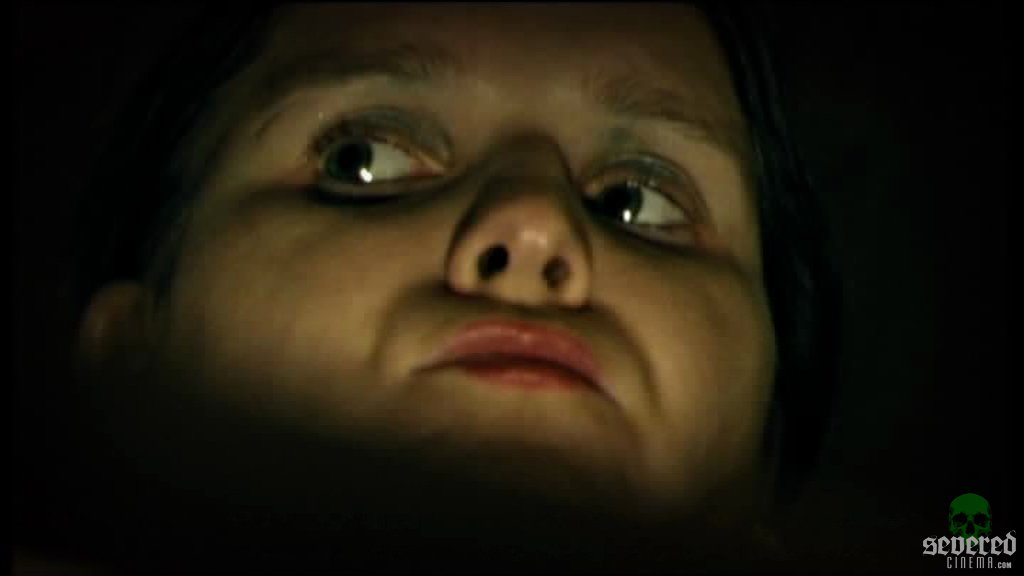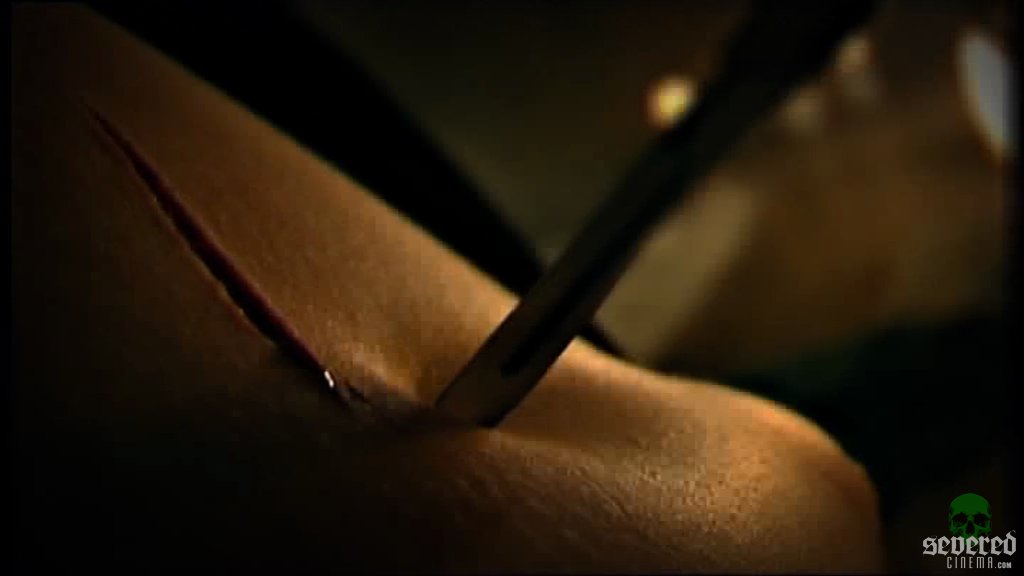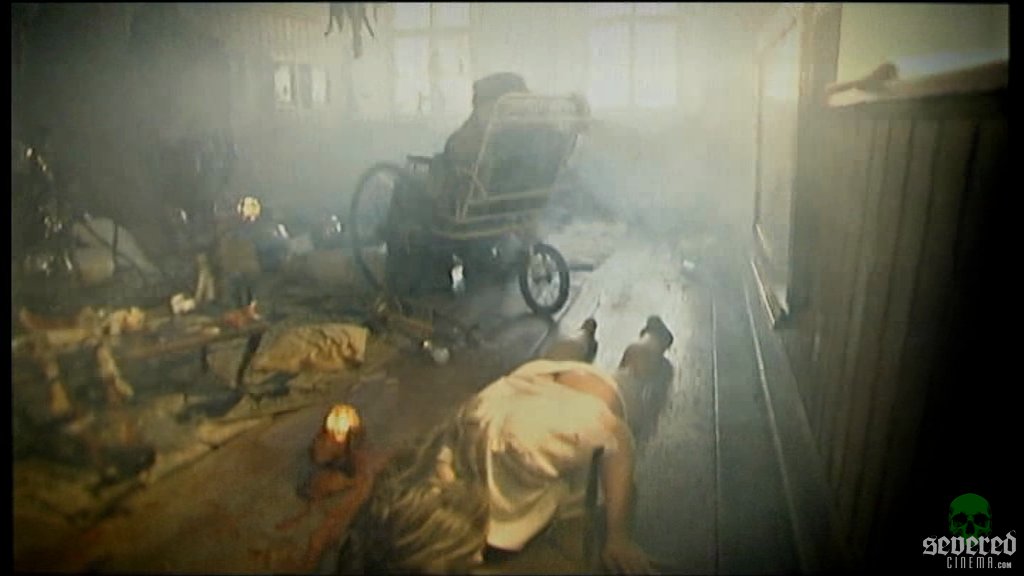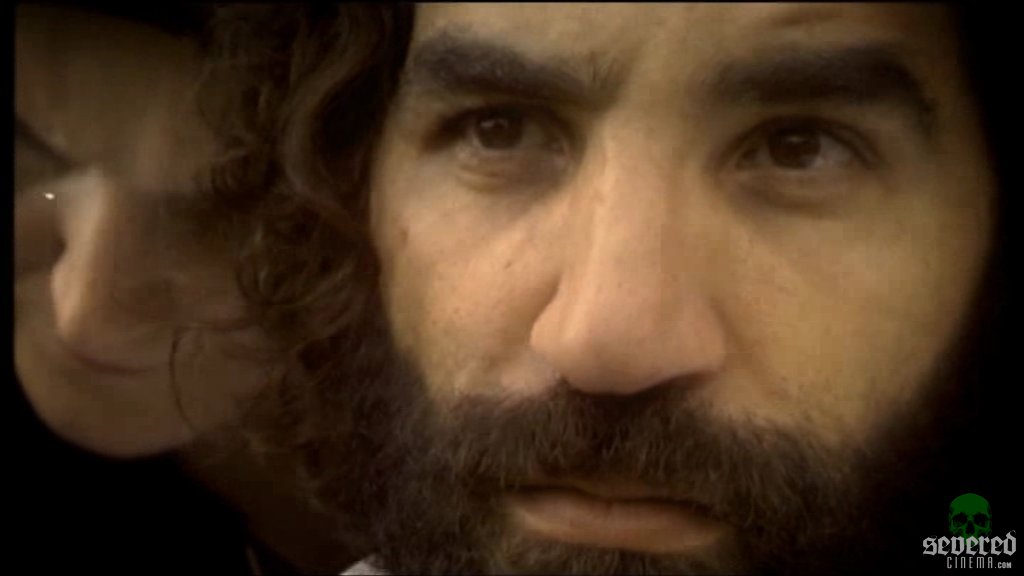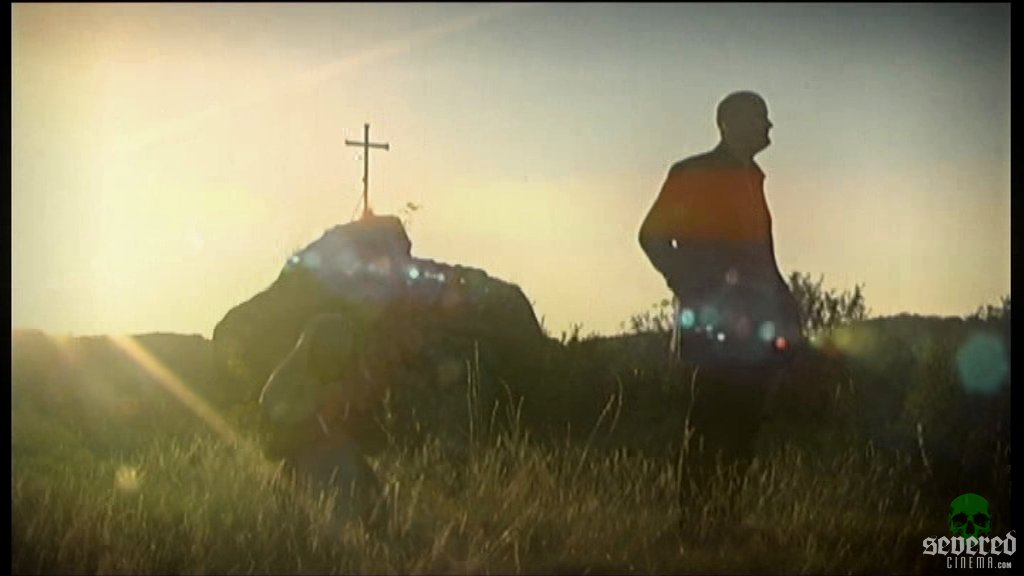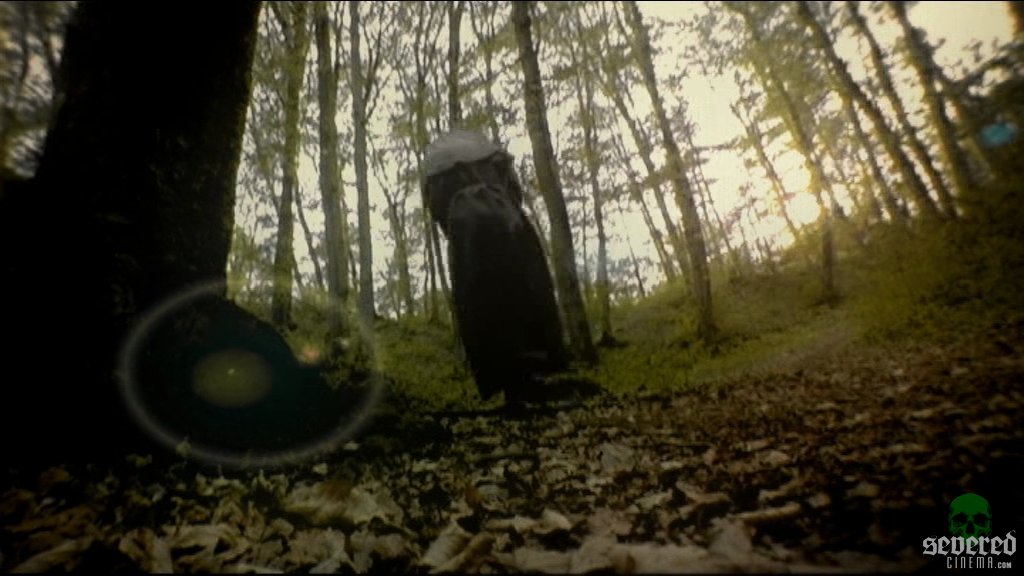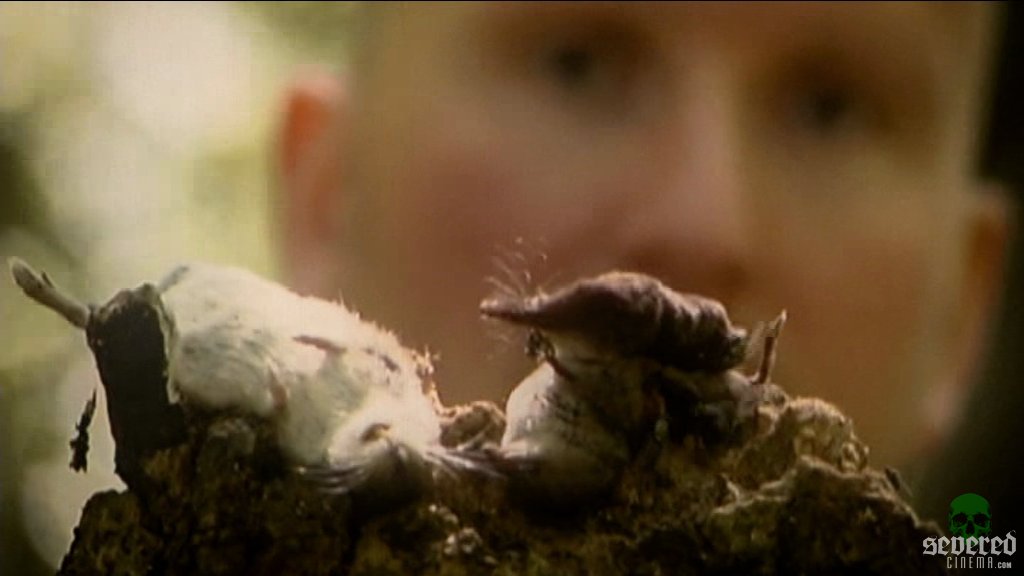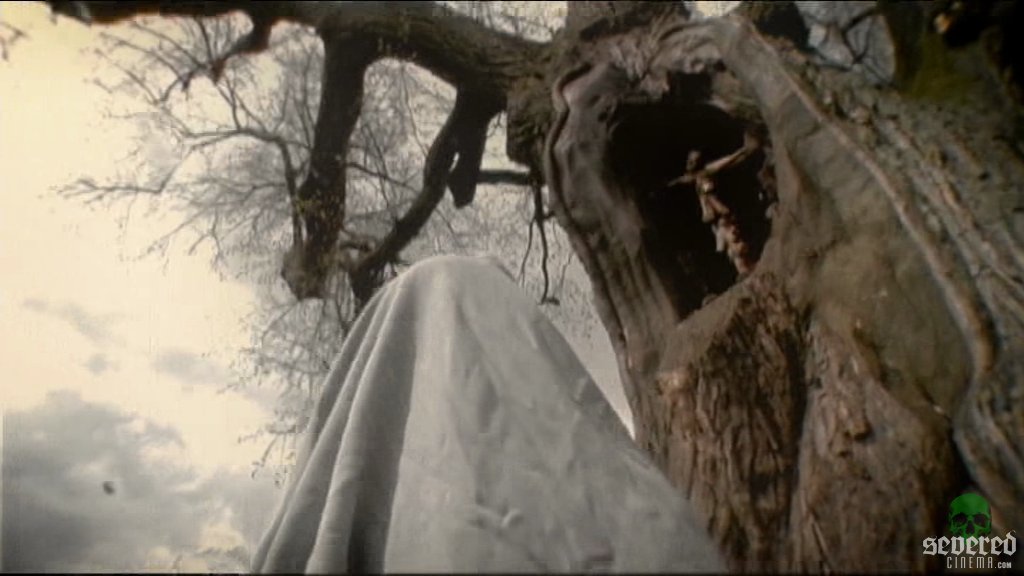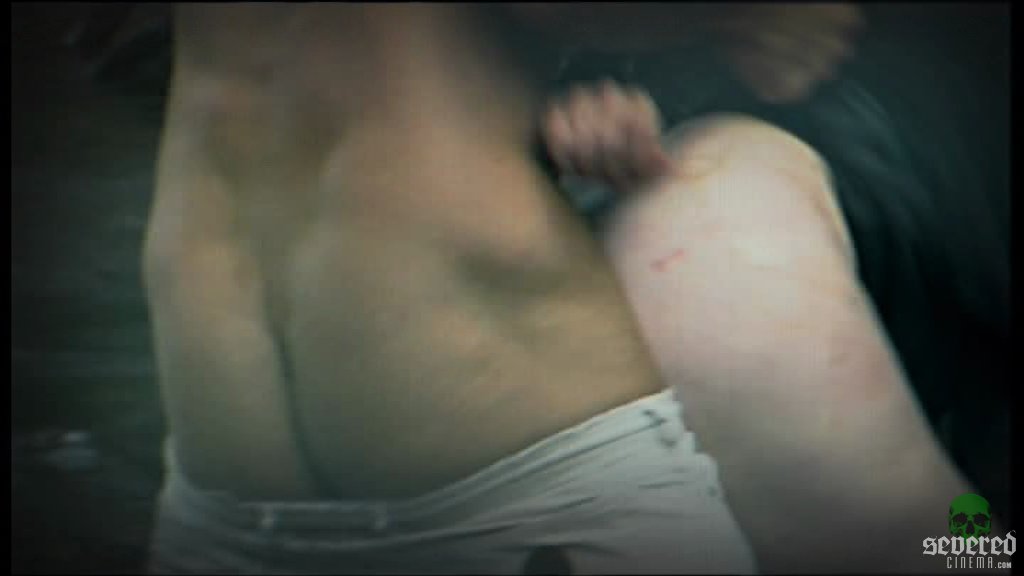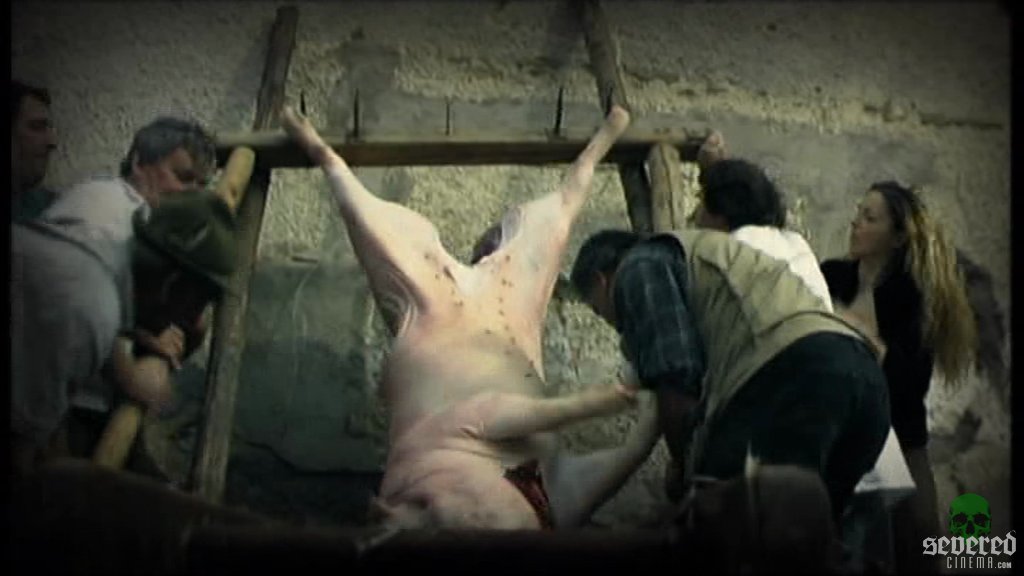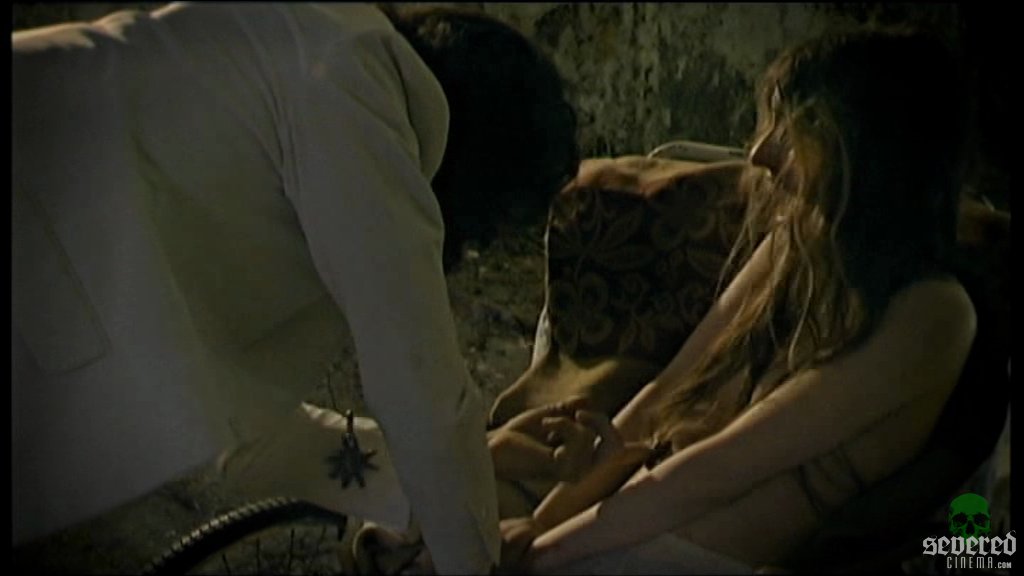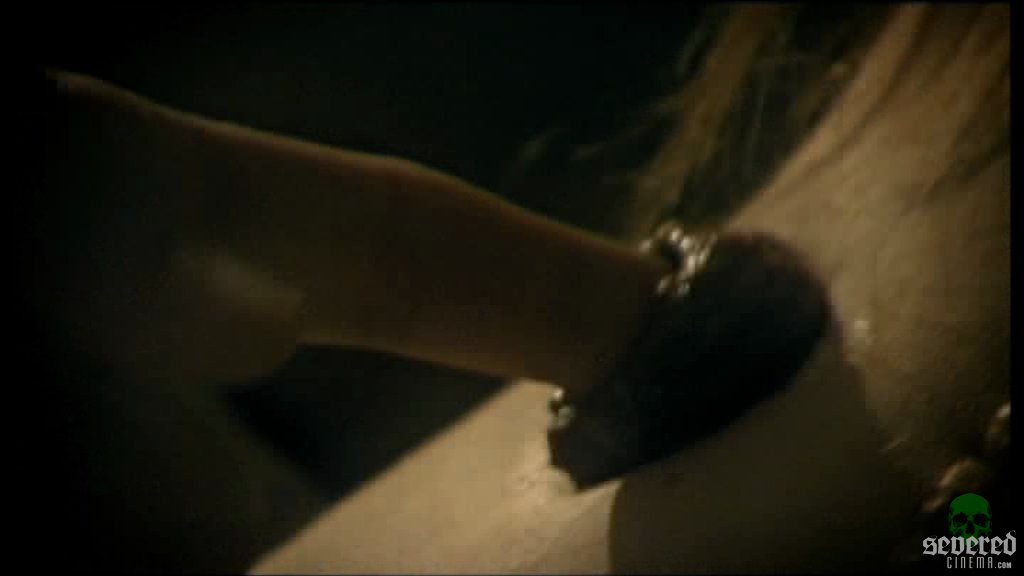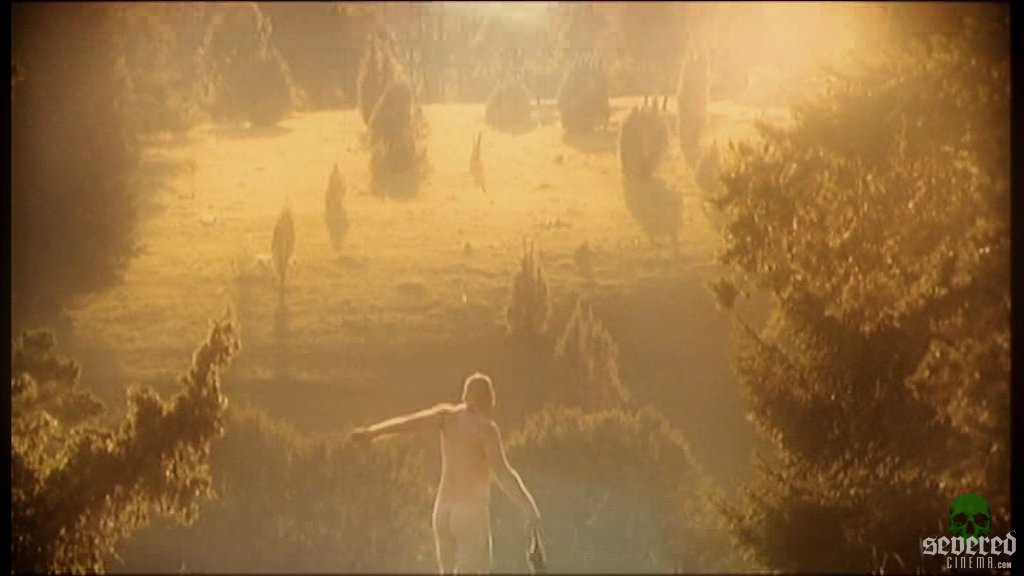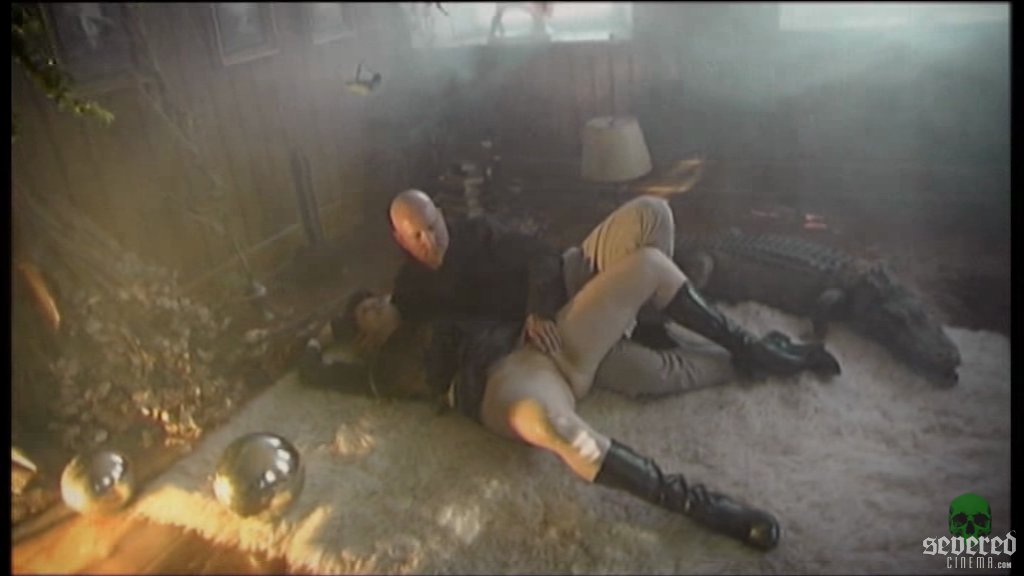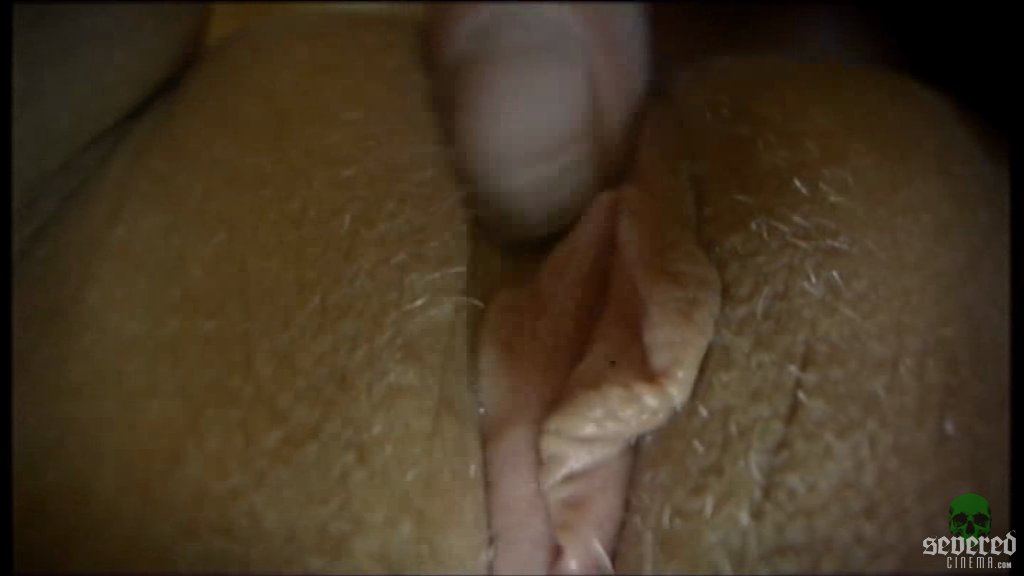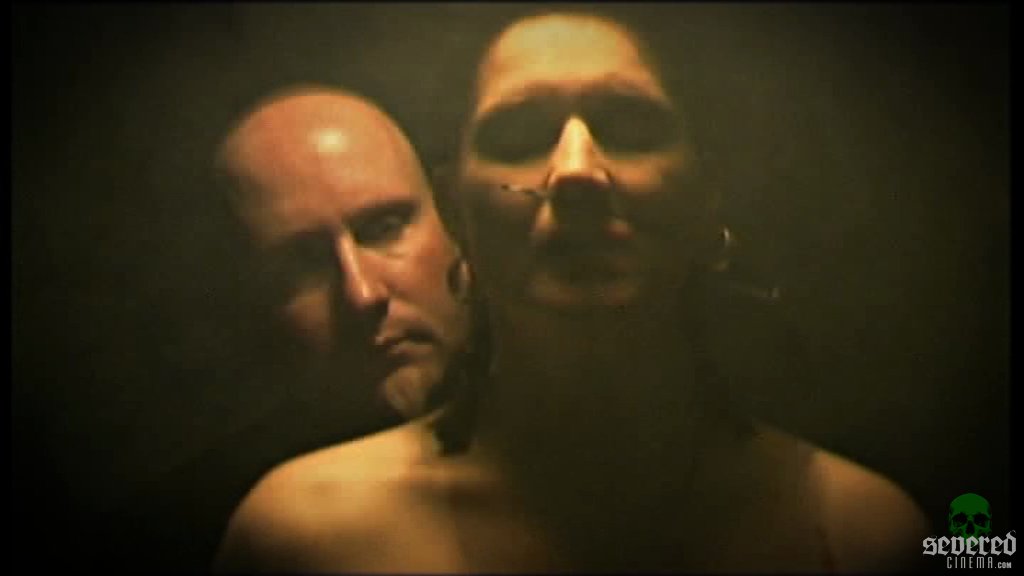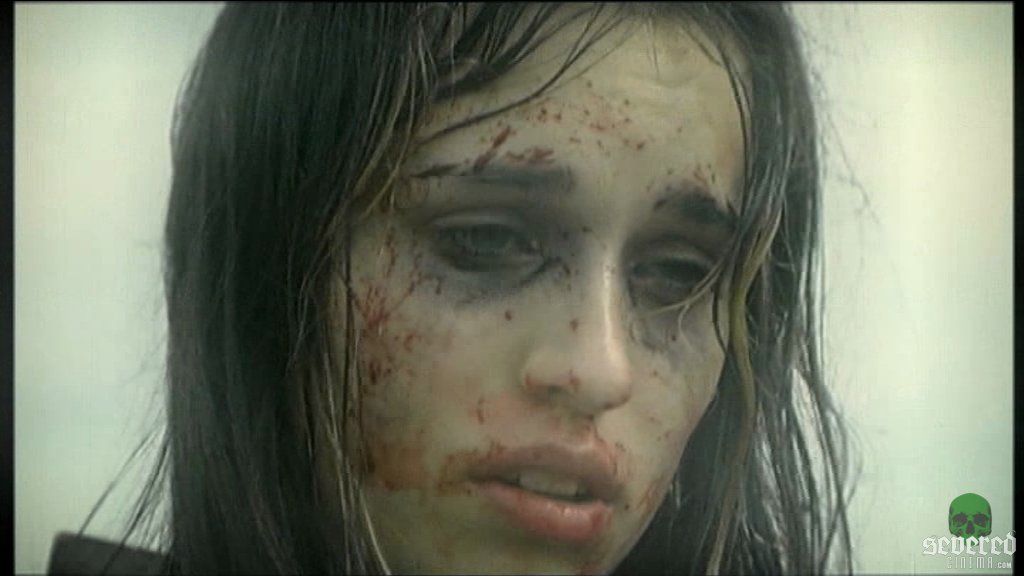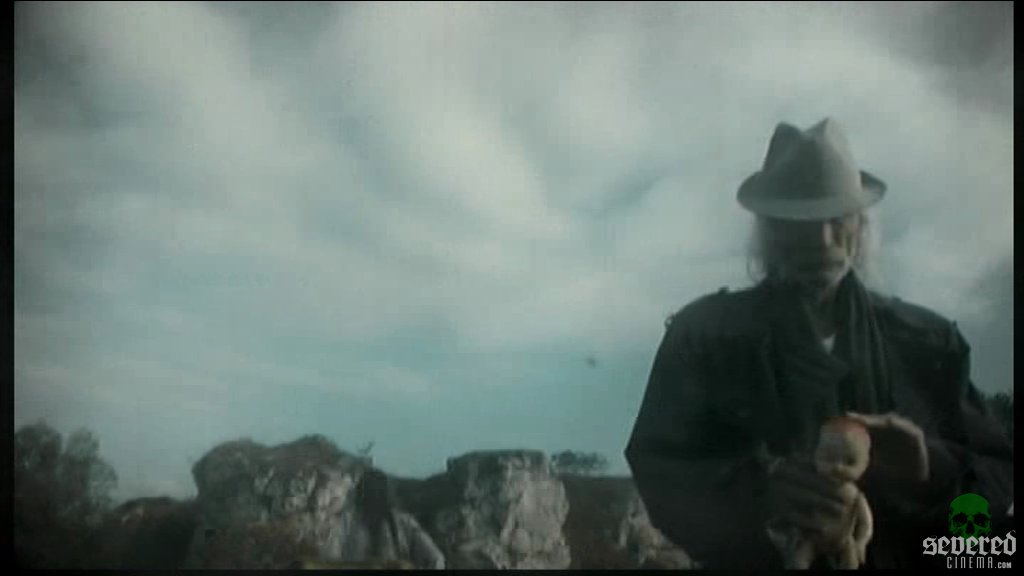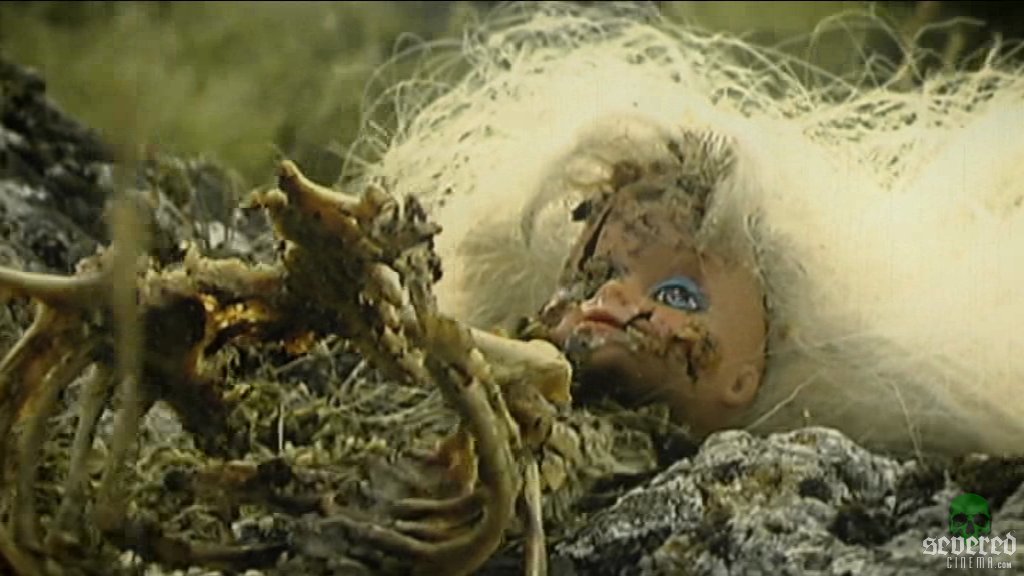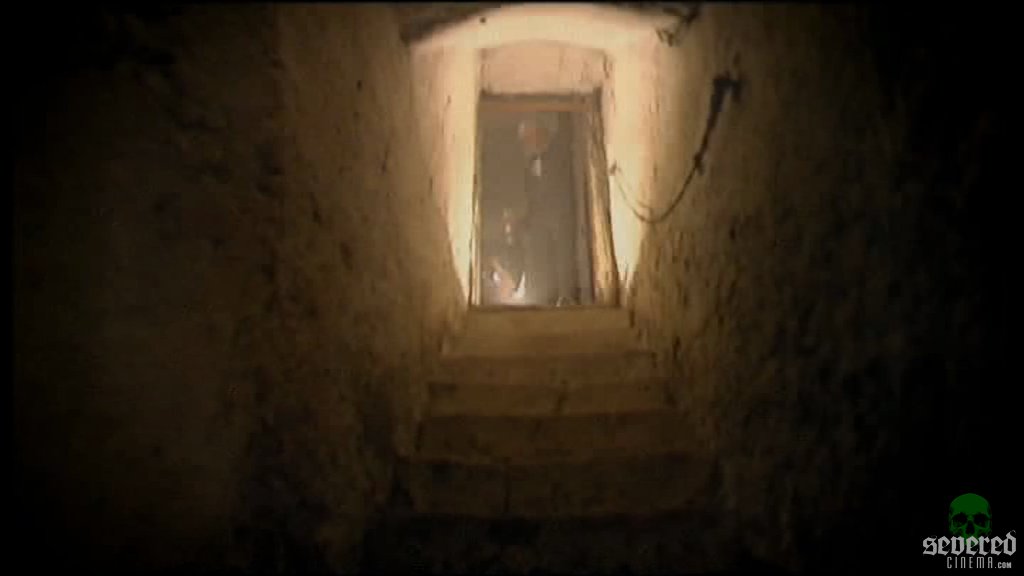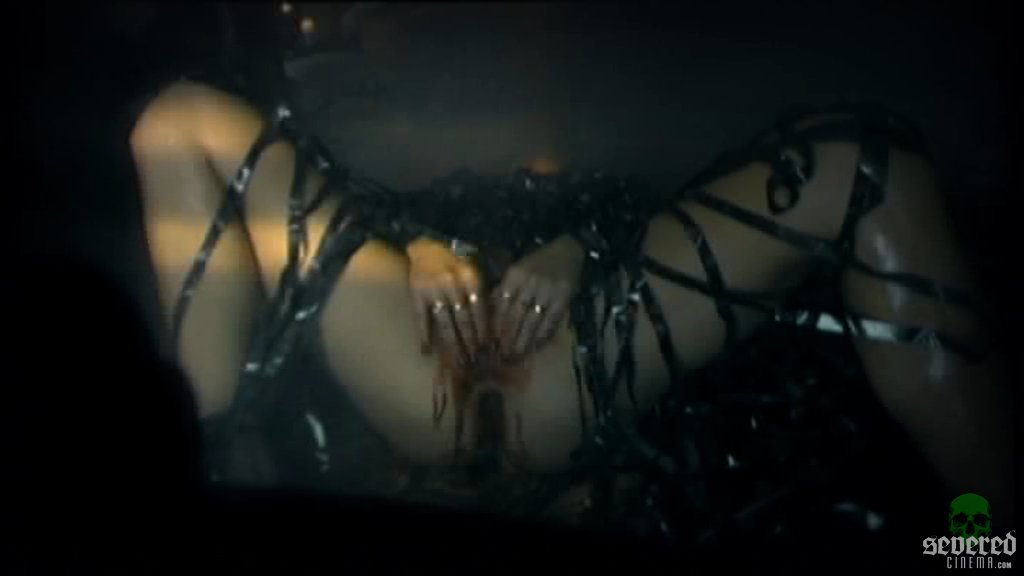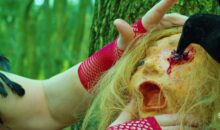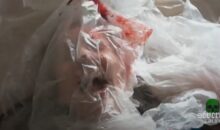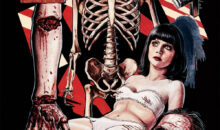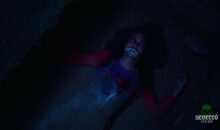Melancholie der Engel (The Angels’ Melancholy) Review!
The follow-up to the 2006 Cannibal, Marian Dora’s Melancholie der Engel — translated in English as The Angels’ Melancholy — is the most notorious, undeniably hardcore German release to date. Clocking over 2 hours of length, the film is an epic portrait of pain and suffering. An ultimate personification of pure evil, the visuals suggest an illustration of man’s inhumanity to man. I must admit I viewed the film without English subtitles, as its German release is the only version currently available. Without subtitles, it is fairly difficult to gauge a clear understanding of the “plot.” As of now, there is no way to know if the dialogue is pretentious and filled with pseudo-intellectual nonsense or not. Although the film is flawed and maddeningly frustrating, it at least gives the sense of an overarching ‘theme,’ culminating in a full “cycle” of life pain vs. pleasure and life and death.
The film opens to a pregnant woman. Her hands are tied over her head, and the film intercuts with images of a salamander in nature back to the helpless woman being terrorized by an unknown assailant. There is a random image of roadkill, strewn along a desolate, quiet road. When the camera zooms away, a vehicle drives down the road and splatters the animal. Opening credits are essentially a surreal, strange montage. The film establishes itself by introducing a bearded man, dressed in white. A bald man, dressed in black, is the bearded man’s “pupil”, and the film shows their close relationship with one and other, in a scene where they meet up and embrace each other. They meet two women at a carnival and eventually bring them back to a house in the woods; a haven for sex, drug use, torture, violence, and fantasy.
Dead animals and dolls decorate the house, which is a den of decay and ruin. Other characters are introduced, such as a domineering woman, a creepy Old Man and a wheelchair-bound woman. We get a sense the evil characters are pseudo philosophers of sorts mastering in the art of pain. They are infatuated with violence and death and its striking correlation to sex. The victims are sacrificial, not unlike certain “animals.” This gathering of characters is a collection of extreme ideas, fetishes and rituals. Sex and death is explored to great length and we learn how “pain” for one person may equal to “pleasure” to another. There is a striking religious theme in the film, too. Later in the film, a nun is introduced, and she fits into the good vs. evil subtext of Marian Dora’s vision. She wants to pleasure herself and ultimately gives into “temptation”, but it is a very forbidden thing. We are reminded of the bald character’s clash with himself, and his second-guessing. Did he make the right decision, or is he too late? Has he reached the point of no return?
Visually, Melancholie der Engel is nightmarish. Wider in scope than Cannibal, the same hazy, blurred look of Marian Dora’s previous film is implemented here. The imagery is particularly haunting, and the cinematography suggests a lyrical quality, at times. Frames will surely stick in your mind, like it or not. Camerawork is fairly impressive, as it glides along and pans at the right moment, gets in extremely close at times, and establishes its atmosphere effectively. There is a superbly shot montage late in the film, where we witness a pig getting slaughtered, as one of the characters (the bearded man) rapes a girl from behind and the nun masturbating on an altar. This is a stunning sequence. Aside from the opening credits, the music can be pretty annoying. The overall length of the film is a chore, and its pace can be laborious and dull. It seemed so long at times, I thought it was longer than its runtime.
What makes Melancholie der Engel so incredibly frustrating is its usage of the animals. Throughout the film, there are numerous depictions of different types of animals being killed. From the visuals, the animals seem to fit into the theme of nature, and the film contrasts animals with the human characters — the victims. Juxtaposed with animals in nature, the film makes a statement that its victims are useless creatures — almost like they are lambs to the slaughter — and how we are insignificant to the Earth. In no way do I advocate animal cruelty. Animal cruelty is something I personally loathe, and I dislike how movies sometimes use them only to kill them on screen. There is a sequence in Melancholie Der Engel, which depicts a pig being slaughtered (the process looks 100% professional), a worm, salamander and a cat being killed. Whether the scenes of animal cruelty are “staged” or “real,” I do not know for myself. I have heard conflicting stories. One story, I have heard the director enjoys to torture animals. Another source informed me the accusations are completely untrue. It is sad to imagine animals being killed for a film. Marian Dora would surely be brought to trial, if true. This would certainly be a scandal in Germany, wouldn’t it?
Filled with unspeakable atrocities, Melancholie der Engel is completely devoid of morality. It is a depraved, perverse and nihilistic endurance test. Readers be warned: I am not joking when I say this film is extremely graphic stuff. Rape, pissing, shitting, dead animals, disembowelment, paraphilia, fetishes, enema, a colostomy bag ripped out and the hole subsequently fingered, knife rape, etc. The list goes on. The animal stuff will turn off a majority of viewers, and many will hate the movie based on that alone. There is a killing of a cat that seems real. It is given a drug and its throat gets viciously slit. It twitches and it eventually dies. The animals contrasted with humans is a strong theme, but it becomes far too repetitive and unnecessarily. With the tedious pace and length of the film, the repetition is somewhat detrimental.
There is some symbolism in the movie (self-reflection, religion, animals/humanity, etc) people will dismiss, and that’s perfectly fine. This film is understandably tough to stomach. It’s extraordinarily tough to handle. Quite frankly, it’s a chore to get through. It’s flawed, it’s overlong and it’s deplorable in many ways. I hate animal cruelty, and it’s heartbreaking to think they’d be killed for art. If animals were killed in the making of the movie, I’d feel a certain way towards Marian Dora. I, however, cannot dismiss the consummate visual strength of Melancholie der Engel, and the themes buried under its macabre smorgasbord of death and decay.
Shock DVD Entertainment presents Melancholie der Engel in a Special Collector’s Edition DVD. There are four brief deleted scenes from the movie — none of them stand out, and they deserved to be cut from the final product. A feature called “Blue Snuff” includes three shorts shot by Marian Dora. The more hardcore viewers will appreciate the twisted nature of these shorts. One of them is called Fruhling, which shows a full autopsy. It looks real, which is not so far-fetched considering Marian Dora is also an M.D. Subcrimitero is a short (near 6 minutes) that brings us inside a graveyard, showing various decayed corpses. The last is called, Erotic Fantasy. Perhaps the most well shot, this short shows a woman being bound on a bed accompanied by a bunch of candles. With a plastic bag over her head, she gets wax poured on her, burnt, she pisses herself, and animals pleasure her. She also gets her nipple sliced, in graphic fashion. Most likely, Melancholie der Engel is not a film I’d watch again. The DVD, however, will appeal to those seeking out some extreme German shock cinema.
AKA: The Angels’ Melancholy, The Angels’ Melancholia
Directed by: Marian Dora | Written by: Marian Dora, Frank Oliver | Produced by: Georg Treml | Cinematography by: Samuel Dalferth | Music by: Marian Dora | Cast: Zensa Raggi, Frank Oliver, Pietro Martellanza, Janette Weller | Year: 2009 | Country: Germany | Language: German | Color: Color | Runtime: 2 h 45 min
Distributor: Shock DVD Entertainment
DVD SPECS:
Aspect Ratio: 1.85:1, 16×9 Widescreen
Region: Region 2 PAL
Audio: German Dolby Digital 5.1, 2.0
SUPPLEMENTAL MATERIAL:
– “Blue Snuff” (3 Marian Dora Shorts)
– Gallery
– Deleted Scenes
– Music



